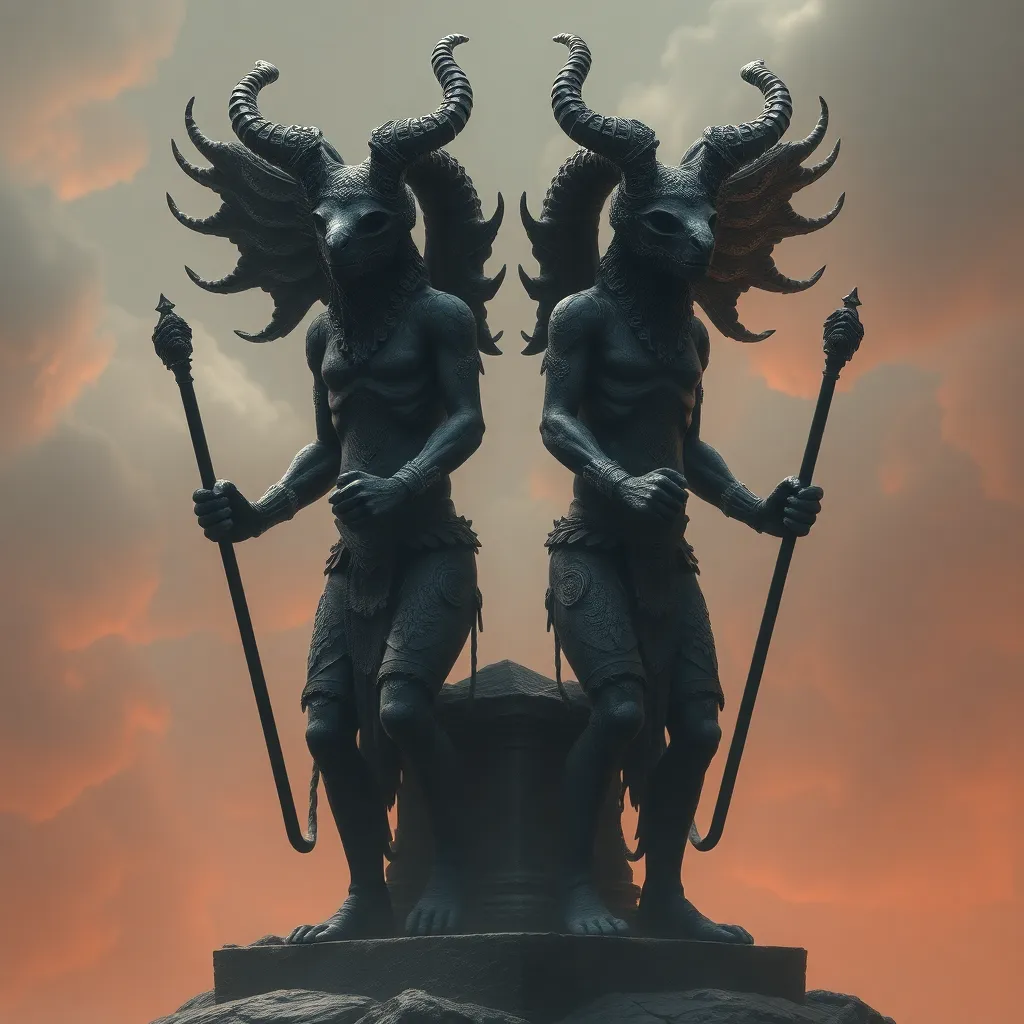The Simurgh’s Secrets: Deciphering the Symbols and Meanings in its Myth
I. Introduction
The Simurgh is a magnificent creature rooted deeply in Persian mythology, often depicted as a benevolent, mythical bird. Its narrative is woven into the fabric of ancient Persian culture, representing themes of wisdom, guidance, and the eternal struggle between good and evil. Understanding the Simurgh’s role in mythology requires a careful examination of the symbols and meanings it carries within its story.
Symbols and meanings play a crucial role in cultural narratives, offering insights into the values, beliefs, and existential questions of a society. This article aims to explore the rich tapestry of the Simurgh’s myth, unveiling its historical context, physical depictions, and the profound lessons it imparts to humanity.
II. Historical Context of the Simurgh
The Simurgh has a storied history within ancient texts, evolving over time to embody various meanings and attributes. Its origins can be traced back to Zoroastrian beliefs, where it was often seen as a symbol of divine intervention and protection.
In Persian literature, the Simurgh appears prominently in epics such as the “Shahnameh” and the mystical poem “Conference of the Birds” by Attar of Nishapur. Throughout these works, it serves as a significant figure, guiding heroes and imparting wisdom.
When compared to other mythological creatures, the Simurgh holds a unique position. Unlike the Phoenix of Greek mythology, which represents rebirth through fire, the Simurgh embodies a more complex duality of nurturing and destruction, reflecting the intricate balance of life.
III. Physical Depictions and Symbolism
The Simurgh is typically depicted as an enormous bird, often resembling a peacock or a griffin, adorned with vibrant feathers and majestic wings. Its physical appearance is not merely ornamental; every aspect is laden with symbolism.
- Feathers: The Simurgh’s feathers are said to possess healing powers, symbolizing the potential for transformation and renewal.
- Wings: The expansive wings represent freedom and the ability to transcend earthly limitations, serving as a reminder of the spiritual journey one must undertake.
- Eyes: The Simurgh’s keen sight signifies wisdom and the ability to see beyond the surface, understanding the hidden truths of existence.
IV. The Simurgh as a Guide and Protector
In “Conference of the Birds,” the Simurgh serves as a pivotal guide for a group of birds on their quest for enlightenment. This tale encapsulates themes of guidance, wisdom, and protection, as the Simurgh leads the seekers through trials to discover their true selves.
The journey to meet the Simurgh symbolizes the hero’s journey, where each character confronts their own fears and desires. The presence of the Simurgh as a protective figure underscores the importance of mentorship and the search for deeper meaning.
V. The Duality of the Simurgh’s Nature
The Simurgh embodies a duality that reflects the complexities of life. On one hand, it is a nurturing figure, offering guidance and protection. On the other, it can unleash destruction, representing the fierce forces of nature and the inevitability of change.
This paradoxical nature of the Simurgh serves as a metaphor for the challenges of existence. It teaches us that life encompasses both creation and destruction, and embracing this duality is essential for personal growth.
VI. Symbolic Interpretations and Cultural Reflections
The influence of the Simurgh extends beyond ancient texts into art, literature, and folklore. Artists have depicted this mythical creature in various forms, highlighting its beauty and significance in Persian culture.
In modern times, the Simurgh has been reinterpreted in various cultural contexts, resonating with themes of resilience and transformation. Its story continues to inspire people worldwide, reflecting universal themes of self-discovery and the quest for meaning in life.
VII. Lessons and Moral Teachings of the Simurgh
The narrative of the Simurgh imparts several key messages. Among them are:
- Self-Discovery: The journey to find the Simurgh is symbolic of the quest for self-understanding and enlightenment.
- Growth Through Adversity: The trials faced by the birds serve as a reminder that challenges are essential for personal development.
- Spiritual Enlightenment: The Simurgh symbolizes the ultimate goal of transcending the ego and connecting with the divine.
VIII. Conclusion
In summary, the Simurgh holds a significant place within Persian mythology, embodying complex symbols and meanings that resonate across cultures and time. Its role as a guide, protector, and paradoxical figure offers valuable insights into the human experience.
As we reflect on the lessons derived from the Simurgh’s narrative, it becomes clear that its symbolism remains relevant today, inviting us to explore our own journeys of self-discovery and spiritual enlightenment.
We encourage readers to delve deeper into the rich mythology of the Simurgh and to engage in discussions that further explore its meanings and teachings.




